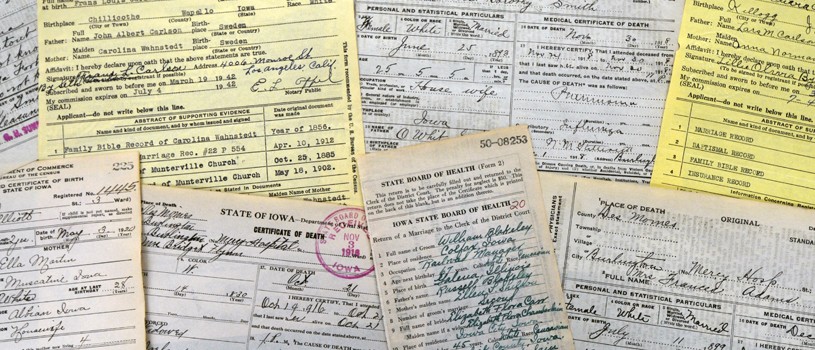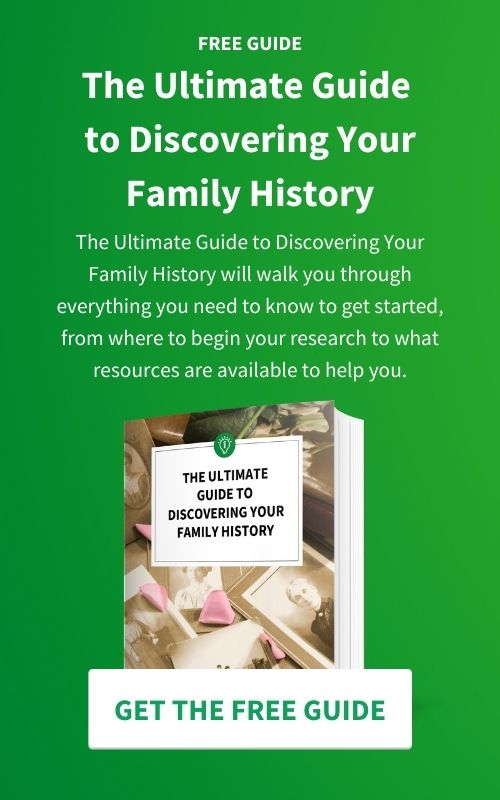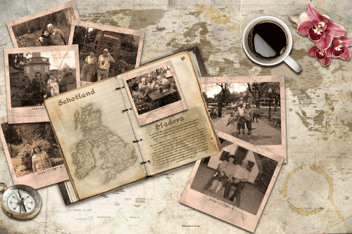Best Guide to Tracing Your Genealogy Evidence
Genealogy research is a captivating exploration, unraveling family roots and connecting past generations to the present. This blog post highlights the need for a systematic approach to gather and evaluate evidence, underscoring the importance of records verification for reliable genealogical research.
Unraveling the Mystery Around Genealogical Evidence
Before delving into the intricacies of genealogical evidence, it's essential to understand what constitutes evidence in this context. In genealogy, evidence can take various forms, each playing a distinct role in constructing an accurate family tree.
- Primary evidence, such as birth certificates or firsthand accounts, holds a special significance due to its direct connection to an event.
- Secondary evidence, like newspaper articles or family letters, provides indirect support.
- Tertiary evidence includes compilations or indexes, offering a broader context but requiring careful scrutiny.
The importance of distinguishing between these types of evidence lies in their reliability and accuracy. Relying solely on secondary or tertiary evidence without corroborating it with primary sources can lead to inaccuracies in the family narrative. Thus, a comprehensive understanding of the various forms of genealogical evidence is crucial for conducting reliable research.
The Importance of Records Verification in Genealogy
Records verification is the backbone of trustworthy genealogy research. As technology advances and digital databases become more accessible, genealogists must navigate a vast sea of information with discernment. Verifying records ensures that the information gathered is accurate and authentic, providing a solid foundation for constructing a family history.
One key aspect of record verification is cross-referencing information from multiple sources. By consulting various records, such as census data, church registers, and legal documents, researchers can corroborate details and establish a more accurate representation of their ancestors' lives. Additionally, assessing the reliability of the sources themselves, considering factors like the informant's proximity to the event and the document's timeframe, further enhances the credibility of the information. The use of indexes do not provide all the information about an individual.
By adopting best practices for record verification, genealogists can confidently build a family tree that stands the test of scrutiny and time. For example, when I am validating records I make every attempt to find at least three record sources so I can confirm vital information and at least one of those may be a primary source.
The meticulous process of cross-referencing and assessing sources not only strengthens the reliability of the information but also contributes to a more nuanced and rich narrative of one's ancestry.
Understanding and Applying Standards of Proof in Genealogy
As genealogists navigate the vast landscape of records and evidence, adherence to standards of proof becomes paramount. Genealogical standards of proof provide a framework for evaluating the reliability and credibility of evidence, ensuring a robust and accurate representation of family history.
Genealogical standards of proof can be categorized into three levels: preponderance of evidence, clear and convincing evidence, and beyond a reasonable doubt. Preponderance of evidence requires that the information is more likely to be true than not. Clear and convincing evidence demands a higher level of certainty, while beyond a reasonable doubt is the most stringent standard, often applied in legal contexts.
The Board for Certified Genealogists (BCG) stands as a cornerstone in the realm of genealogy, setting rigorous standards for those seeking to achieve certification as professional genealogists. Established with the mission of promoting excellence in genealogical research, the BCG has formulated a comprehensive set of proof standards that serve as a guiding framework for practitioners in the field. These standards, often referred to as the Genealogical Proof Standard (GPS), delineate the necessary criteria to ensure accurate and credible genealogical research. The GPS comprises five essential elements,
Genealogical Proof Standard (GPS)
To reach a sound conclusion, we need to meet all five components of the GPS.
- Reasonably exhaustive research.
- Complete and accurate source citations.
- Thorough analysis and correlation.
- Resolution of conflicting evidence.
- Soundly written conclusion based on the strongest evidence.[1]
These standards are designed to elevate the quality and reliability of genealogical work, encouraging practitioners to adhere to a high level of professionalism and integrity in their pursuit of uncovering family histories. Aspiring genealogists and seasoned professionals alike turn to the BCG's proof standards as a benchmark for excellence, recognizing the invaluable guidance they provide in the pursuit of verifiable and well-documented family narratives.
Applying these standards involves a careful evaluation of the evidence's quality, quantity, and consistency. For example, multiple primary sources attesting to a birth date would carry more weight than a single secondary source. By incorporating these standards into the research process, genealogists can build a compelling case for the accuracy of their findings, ensuring a reliable family history.
Practical Steps to Tracing Your Genealogy Evidence
Embarking on a journey to trace one's genealogy requires a systematic and organized approach to collecting evidence. A step-by-step method can streamline the process and help genealogists navigate the wealth of information available.
Begin by identifying your research goals and creating a research plan. Clearly define the questions you aim to answer and the information you seek. This focused approach will guide your research and prevent getting lost in the vast array of available records.
Next, leverage both online and offline resources. While digital databases and online archives offer convenience, traditional archives, libraries, and local repositories may house unique and invaluable records. Casting a wide net ensures a comprehensive exploration of available evidence.
Organization is key to successful genealogy research. Establish a systematic method for recording and storing information. Create a detailed log of sources consulted, noting the date, location, and any discrepancies or conflicting information. Digital tools, such as genealogy software or online family tree platforms, can assist in maintaining an organized record.
Corroborate information by cross-referencing multiple sources. Consistency across various records adds credibility to the gathered evidence. Take note of any discrepancies and work to reconcile conflicting information through further research and analysis.
Evaluate the quality of the evidence by considering factors such as the informant's proximity to the event, the reliability of the source, and the timeframe of the record. Be discerning in assessing the credibility of each piece of evidence, giving priority to primary sources whenever possible.
Evidence Explained

Elizabeth Shown Mills, Genealogist and author has studied the standards of proof and has written two very useful books, Evidence Explained: Historical Analysis, Citation & Source Usage and Evidence Explained: Citing History Sources from Artifacts to Cyberspace. Both of these books is a comprehensive reference guide and a valuable resource for genealogists, historians, and researchers, offering detailed guidance on how to properly cite and analyze historical sources.
Mills provides in-depth explanations and examples for citing a wide range of sources, including traditional archival documents, digital records, online databases, and even artifacts. The emphasis is on creating accurate and well-documented citations that meet scholarly standards.
The book is organized into logical and user-friendly sections, covering various types of sources and addressing the complexities of modern research in the digital age. Mills not only explains the principles behind citation but also delves into the historical context and reliability of different sources, helping researchers evaluate the quality of their evidence. "Evidence Explained" has become a standard reference for genealogical research, equipping practitioners with the tools to navigate the diverse landscape of historical records and present their findings in a clear and credible manner.
Elizabeth Shown Mills has also authored other works that complement "Evidence Explained," including "Quick Sheet: Citing Online Historical Resources" and "Quick Sheet: Citing Ancestry.com Databases & Images." These quick reference guides offer condensed information for easy consultation when dealing with specific types of sources or online platforms commonly used in genealogy research. Overall, Elizabeth Shown Mills' contributions have significantly influenced the standards of evidence and citation in the genealogy community, providing researchers with a solid foundation for sound and reliable family history work. Take a look at the Evidence Explained website for quick reference information.
Conclusion
In conclusion, tracing one's genealogy is a rewarding endeavor that requires diligence, critical thinking, and adherence to established standards of proof. By understanding the various forms of genealogical evidence, emphasizing the importance of records verification, and applying rigorous standards of proof, genealogists can uncover a rich tapestry of family history.
Following practical steps for collecting, organizing, and evaluating evidence ensures a reliable and compelling representation of one's ancestry. As we reflect on the significance of evidence in genealogy, let us remember that the stories we uncover contribute not only to our personal narratives but also to the collective history of our families and communities.


Article by Carol Walsh
Carol Walsh is the CEO of Creative Roots, a professional genealogy company. She has a passion for preserving family history and storytelling. Carol's research methodology centers around fact-finding and publishing in a format that readers can use to preserve the stories. Her ultimate goal is to help families connect with their past and each other.





